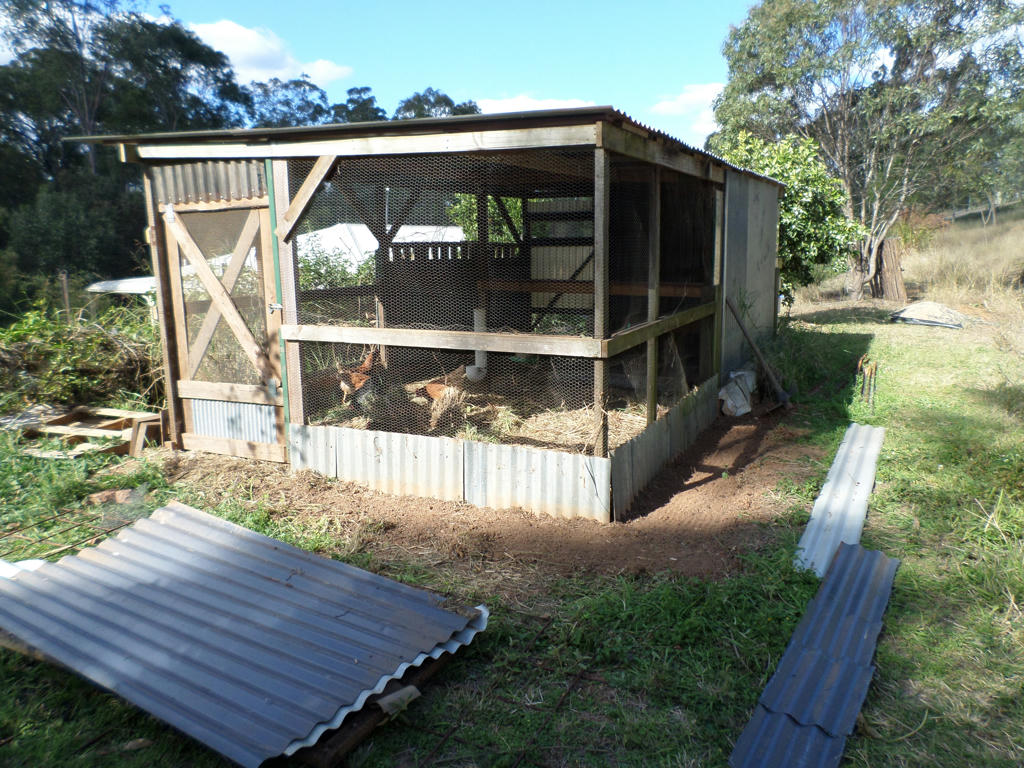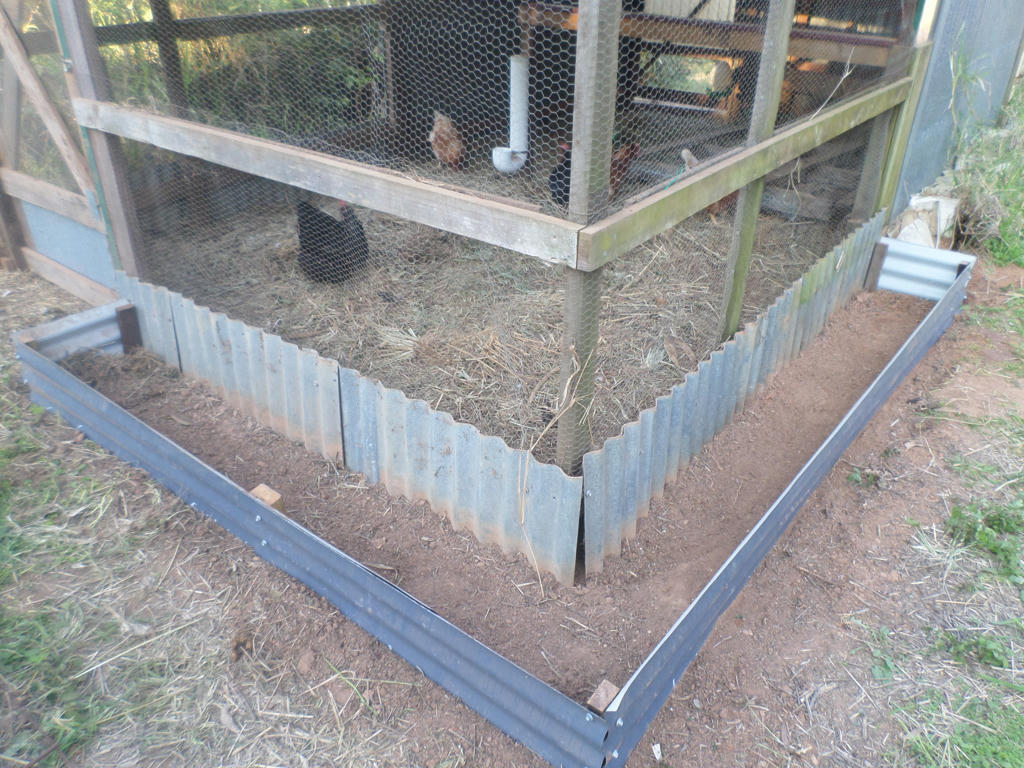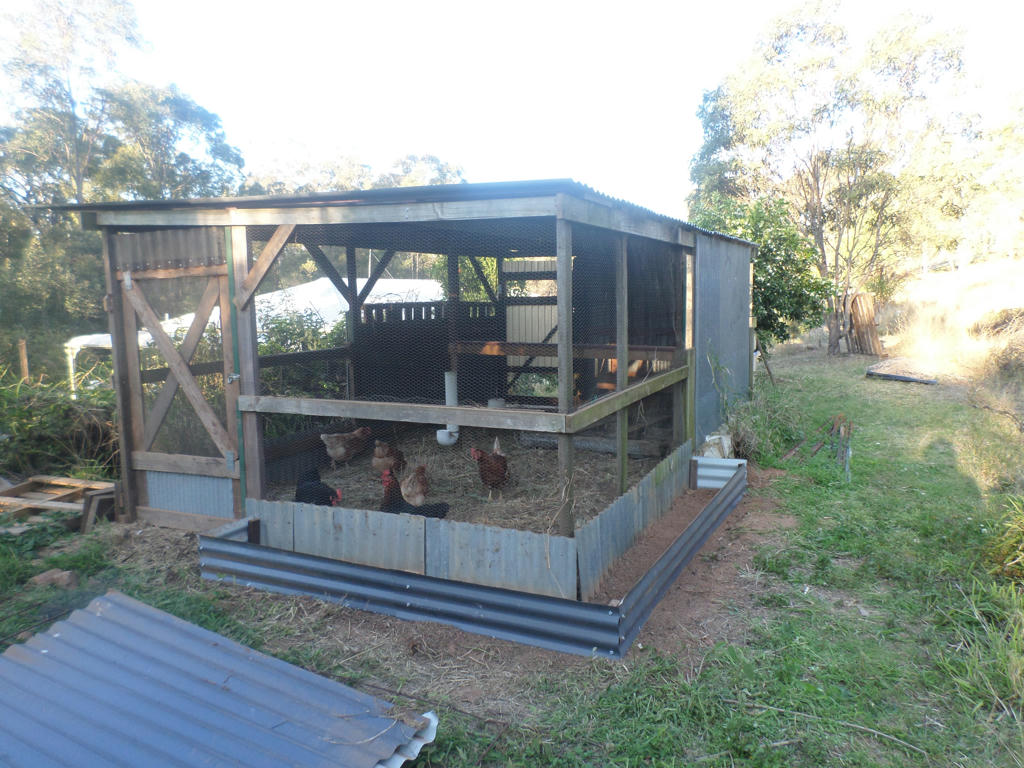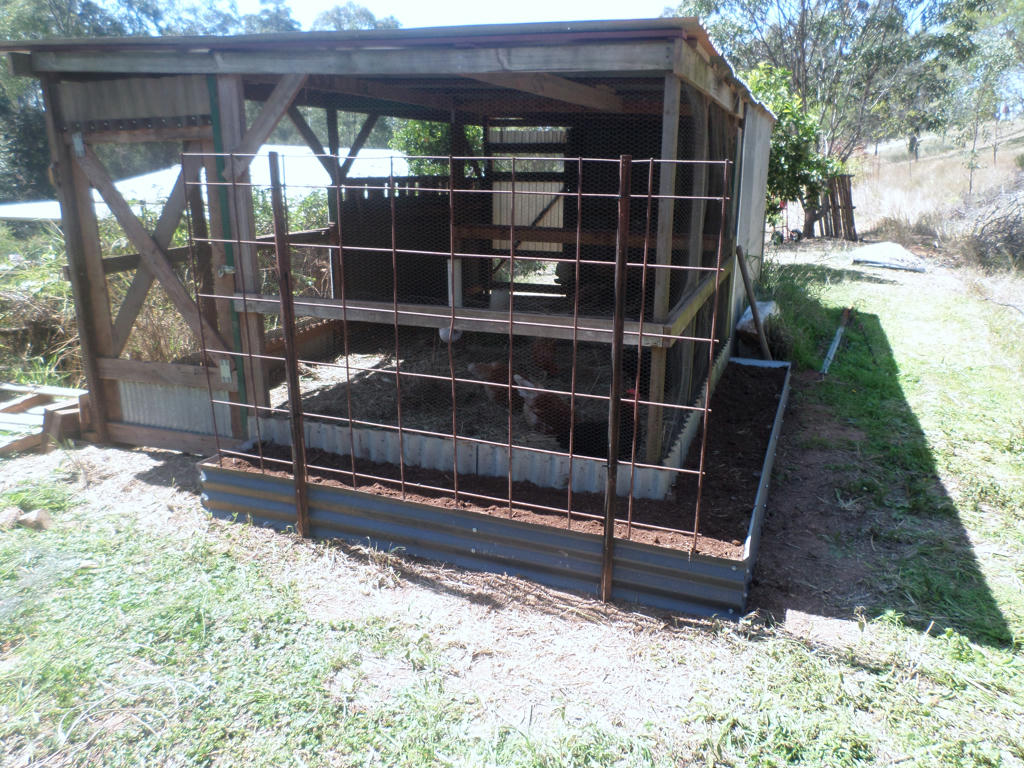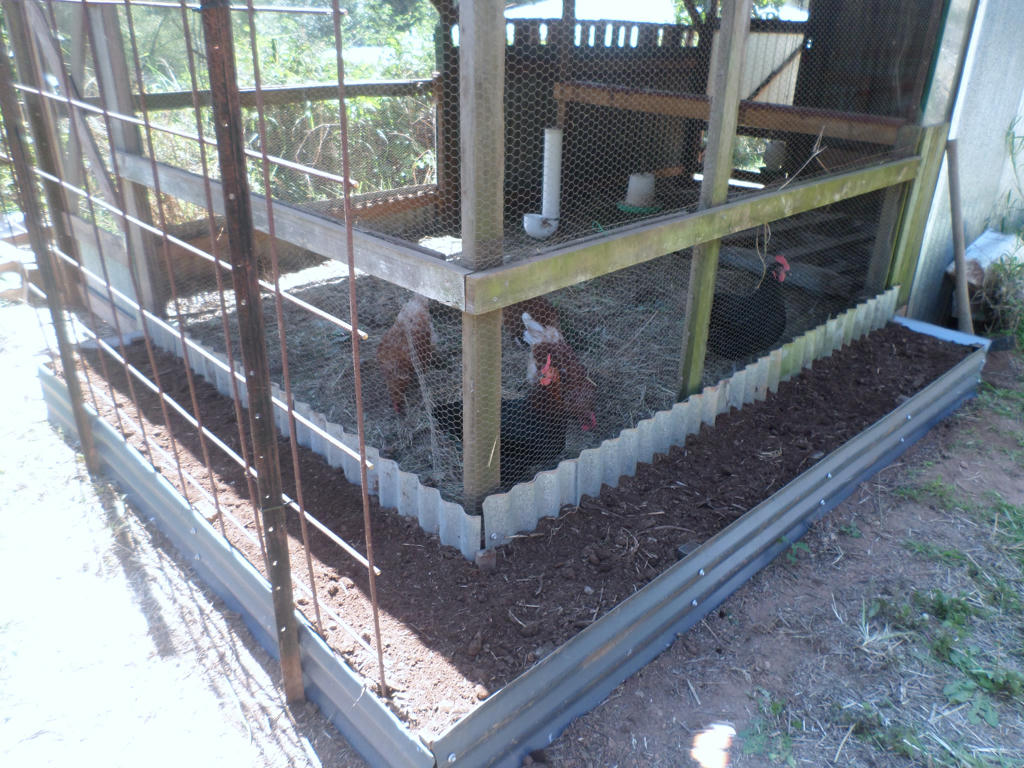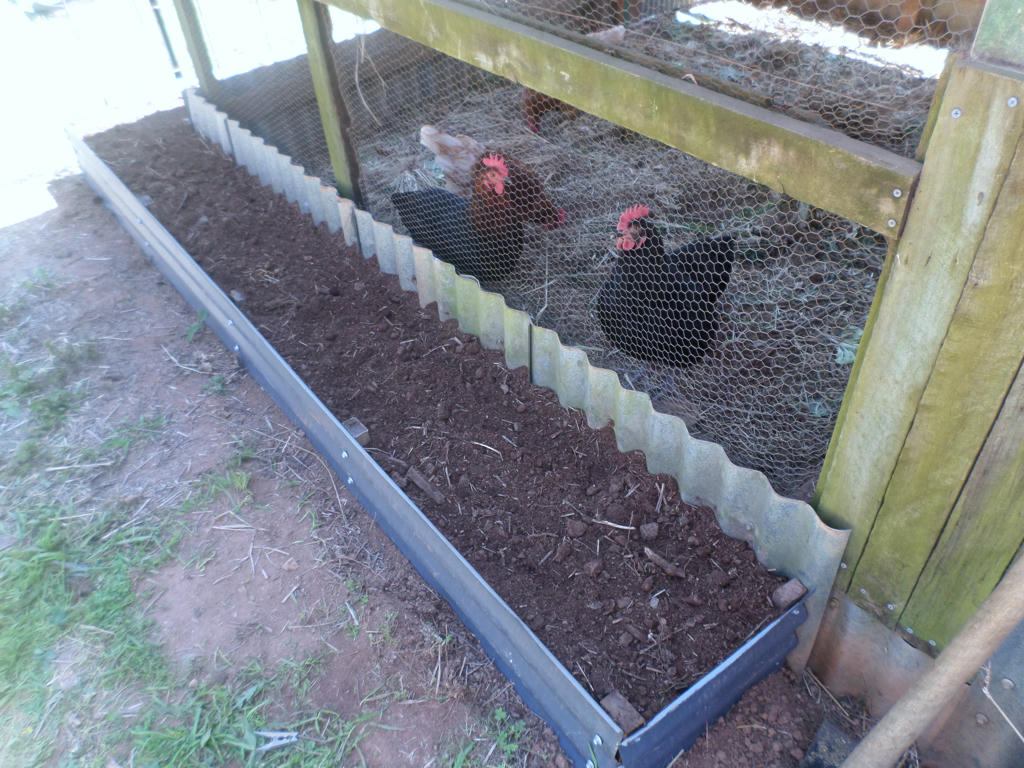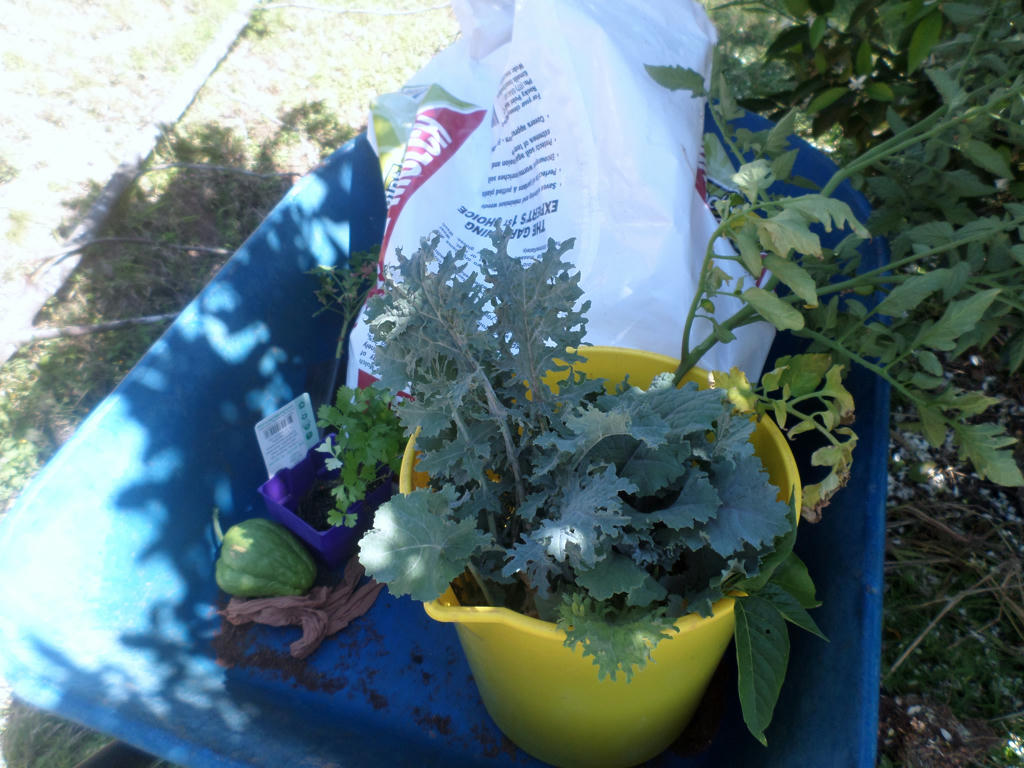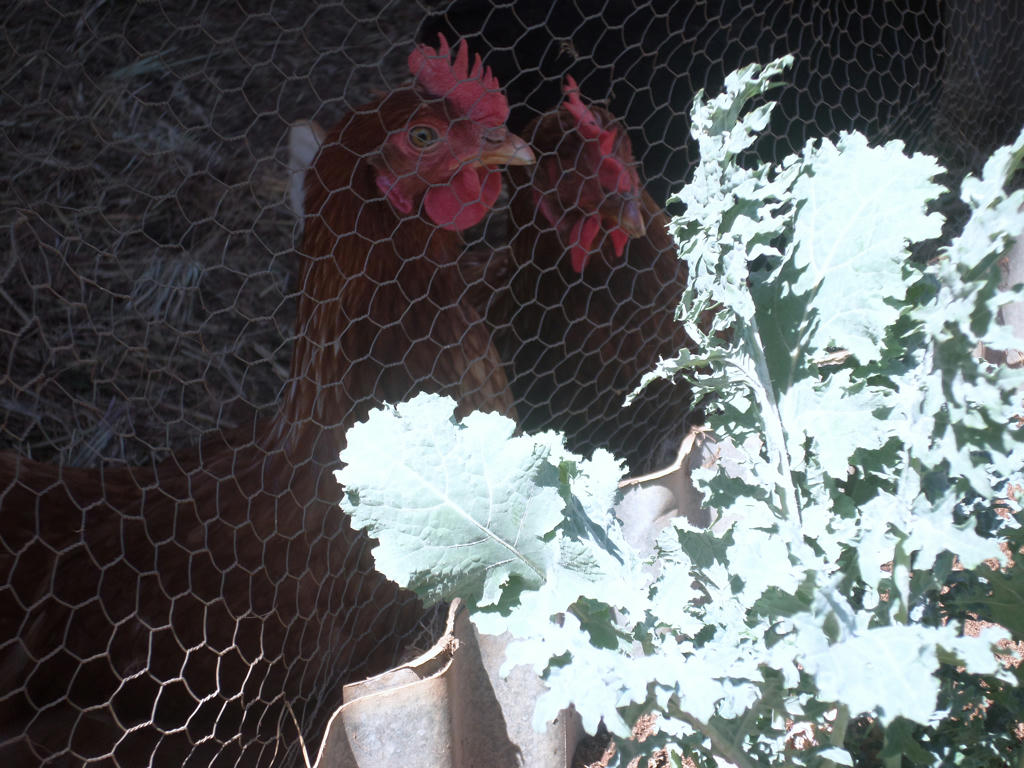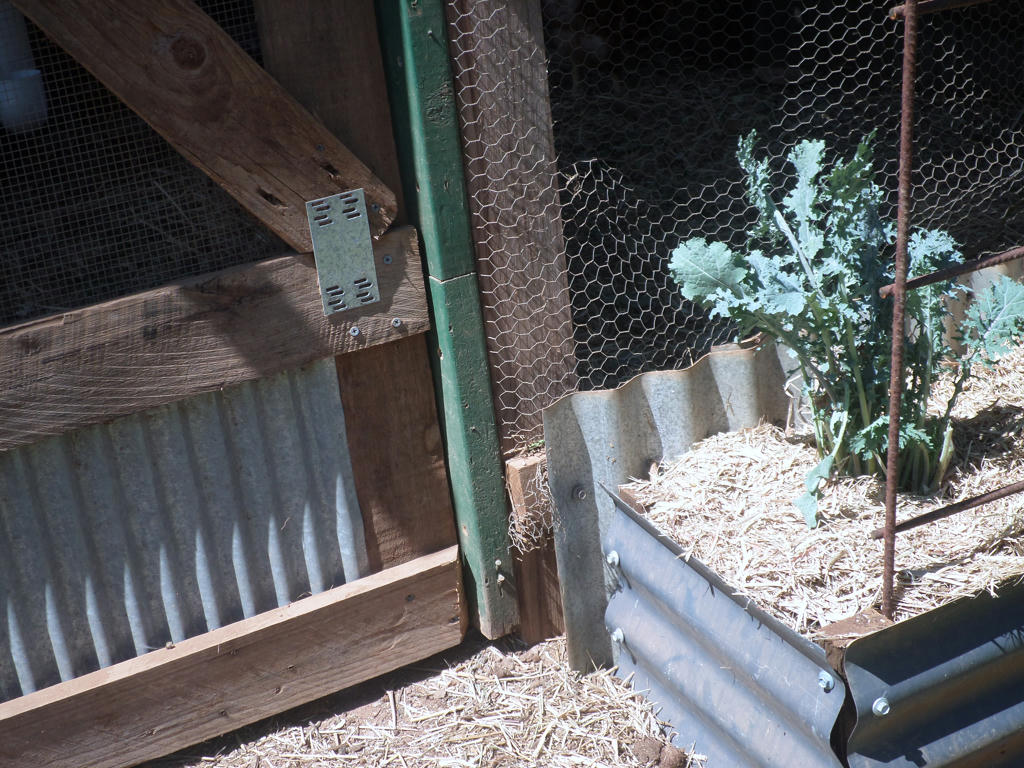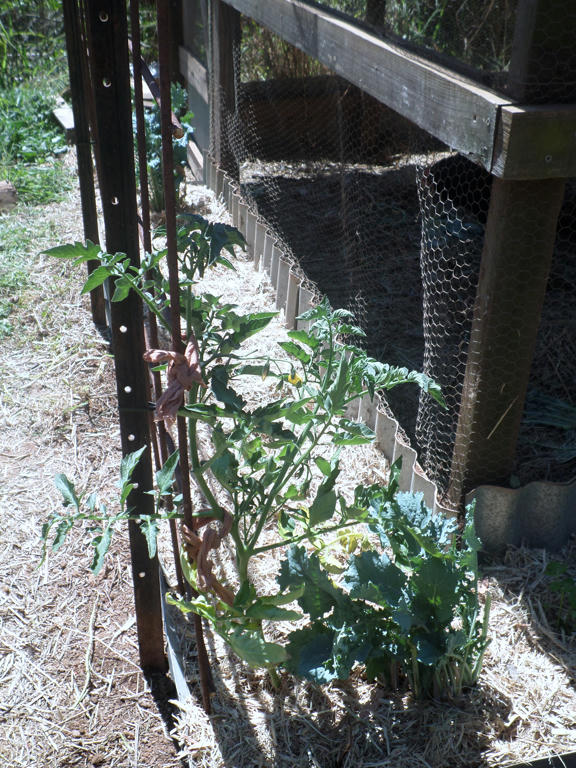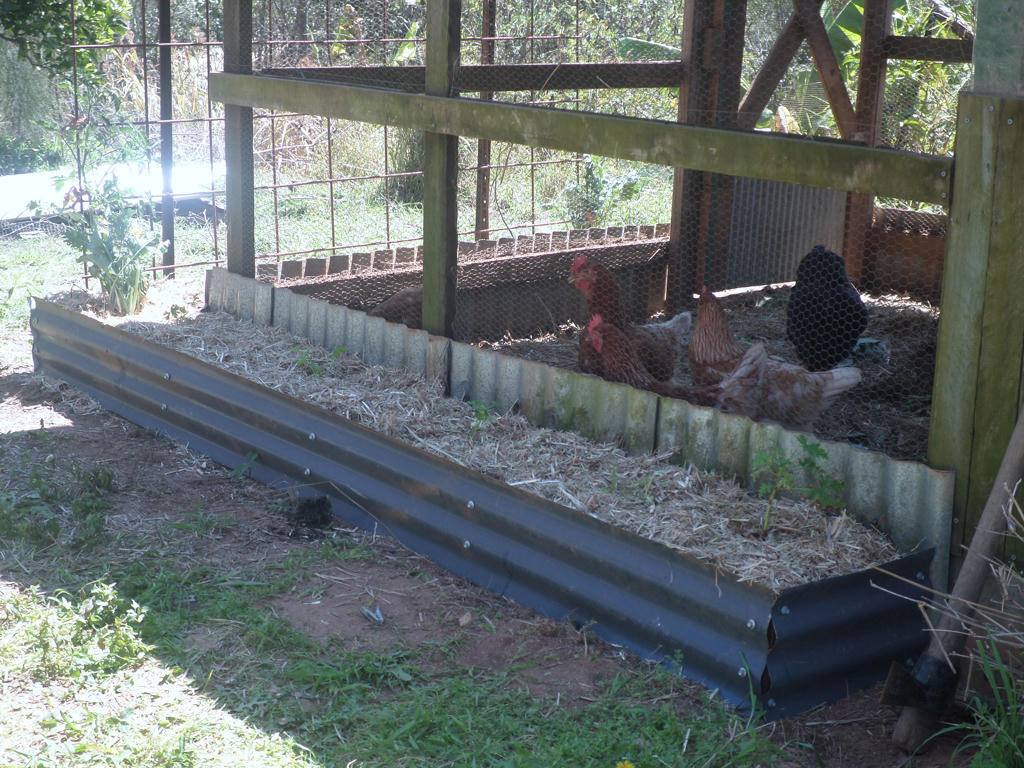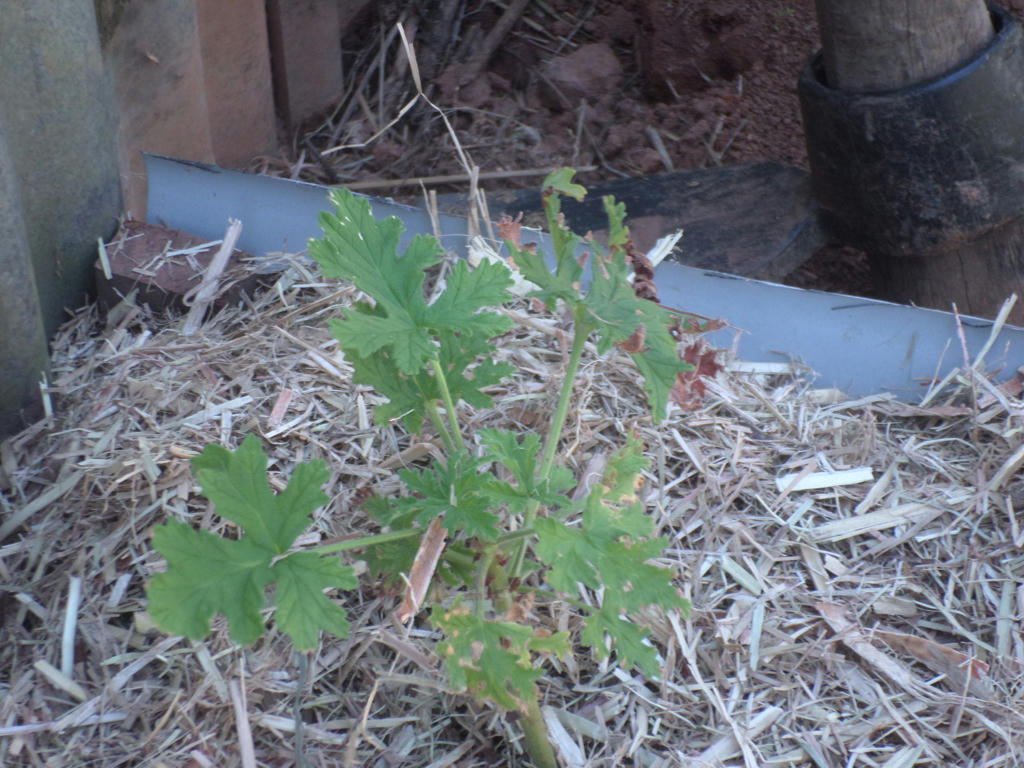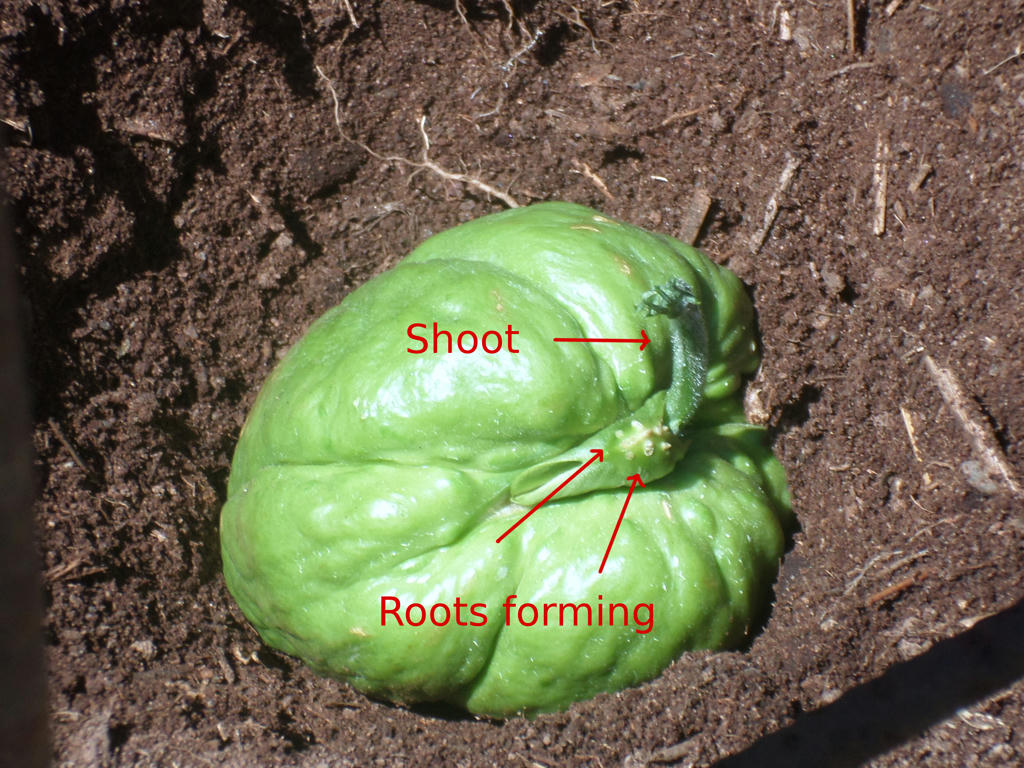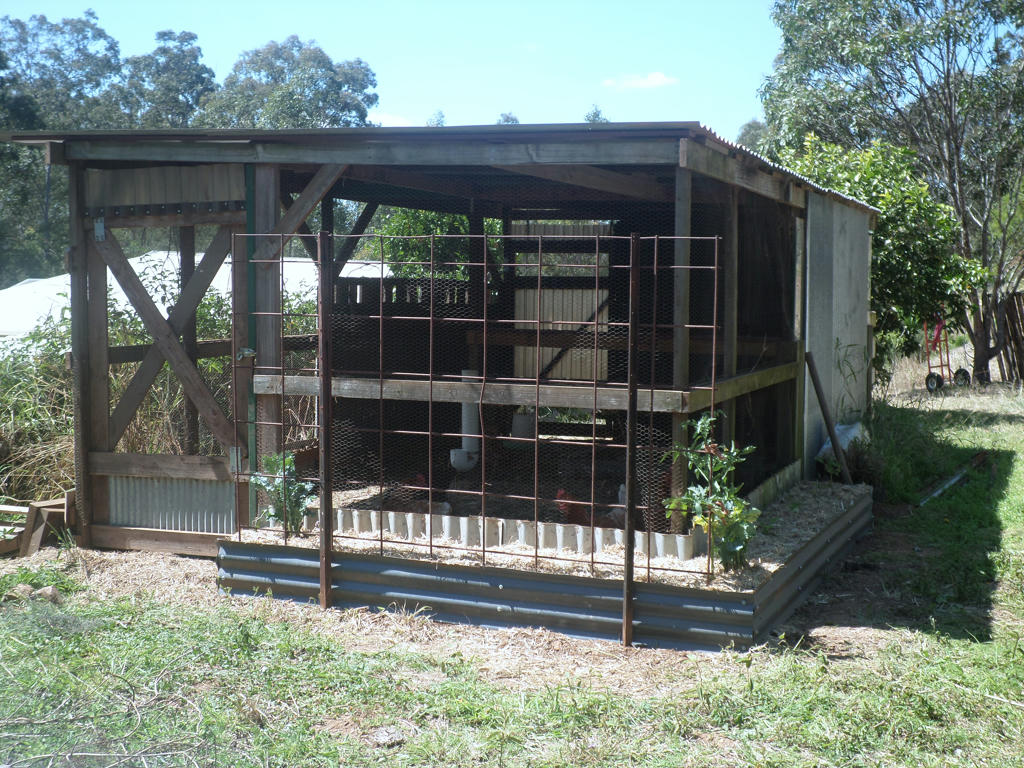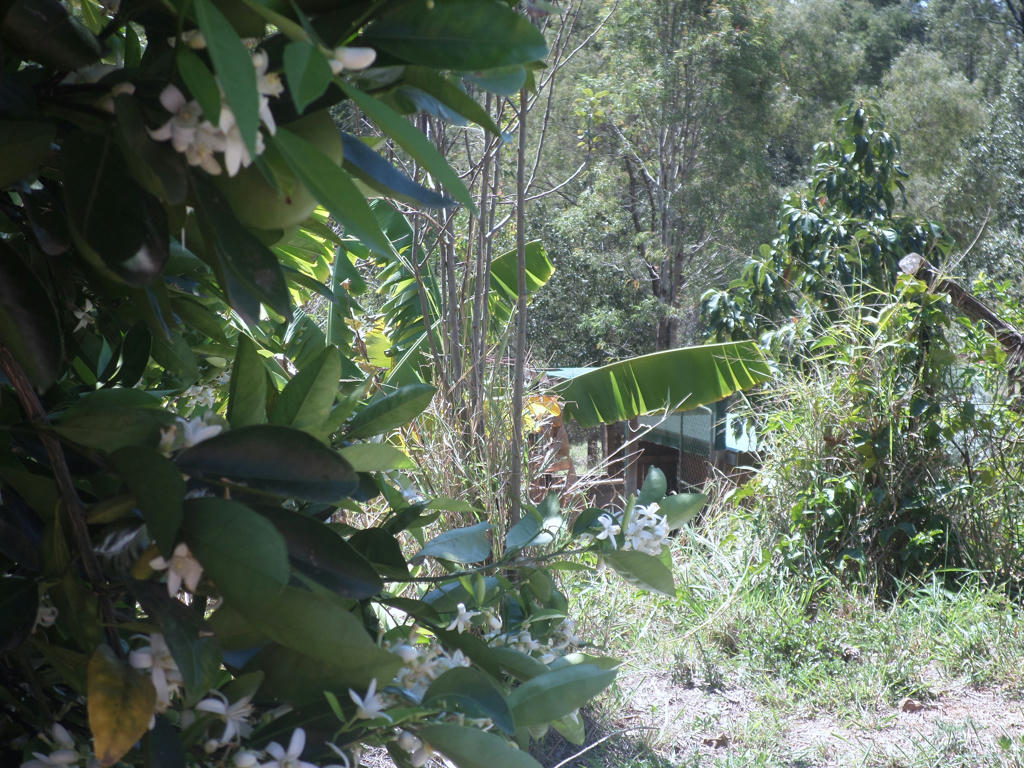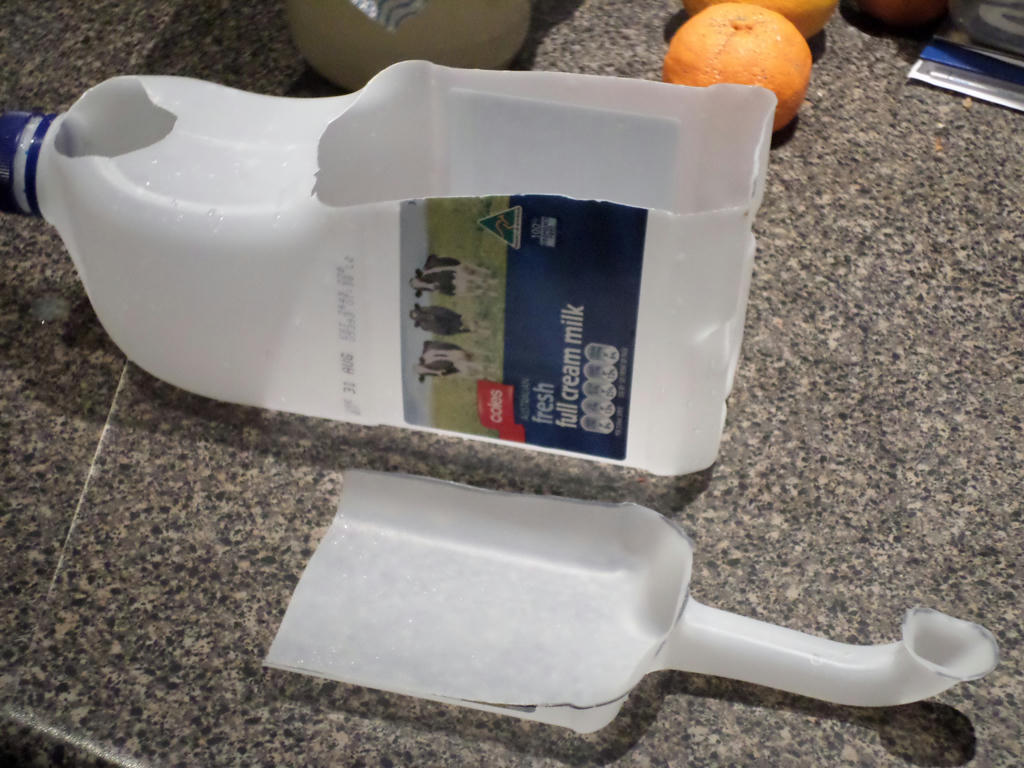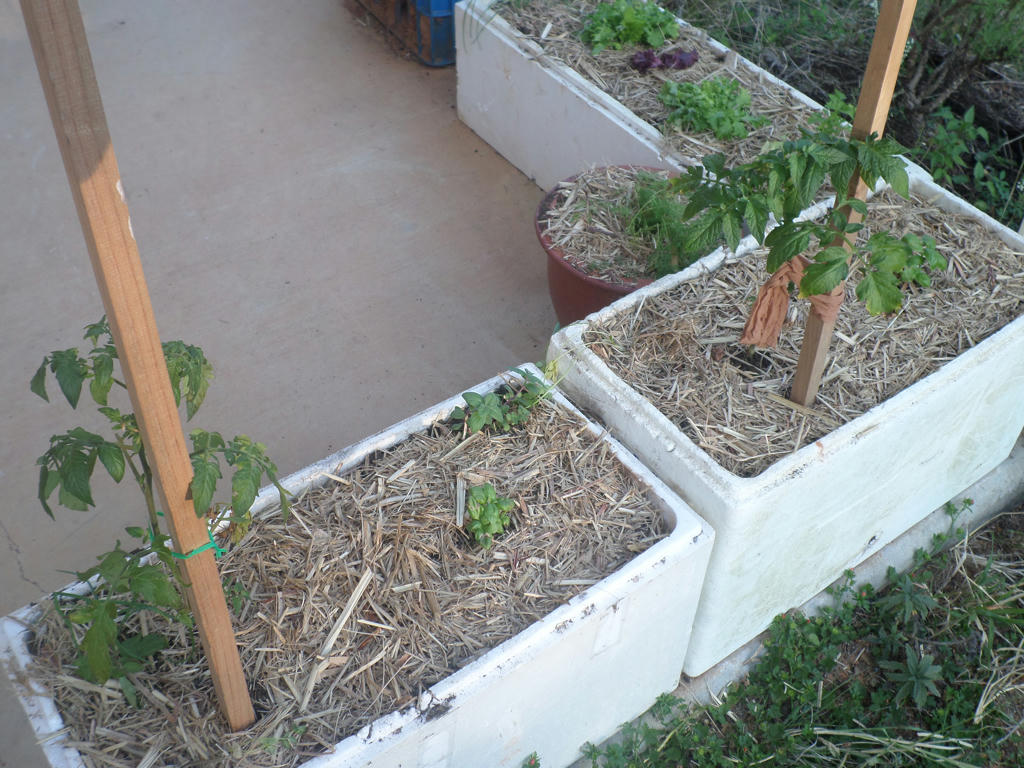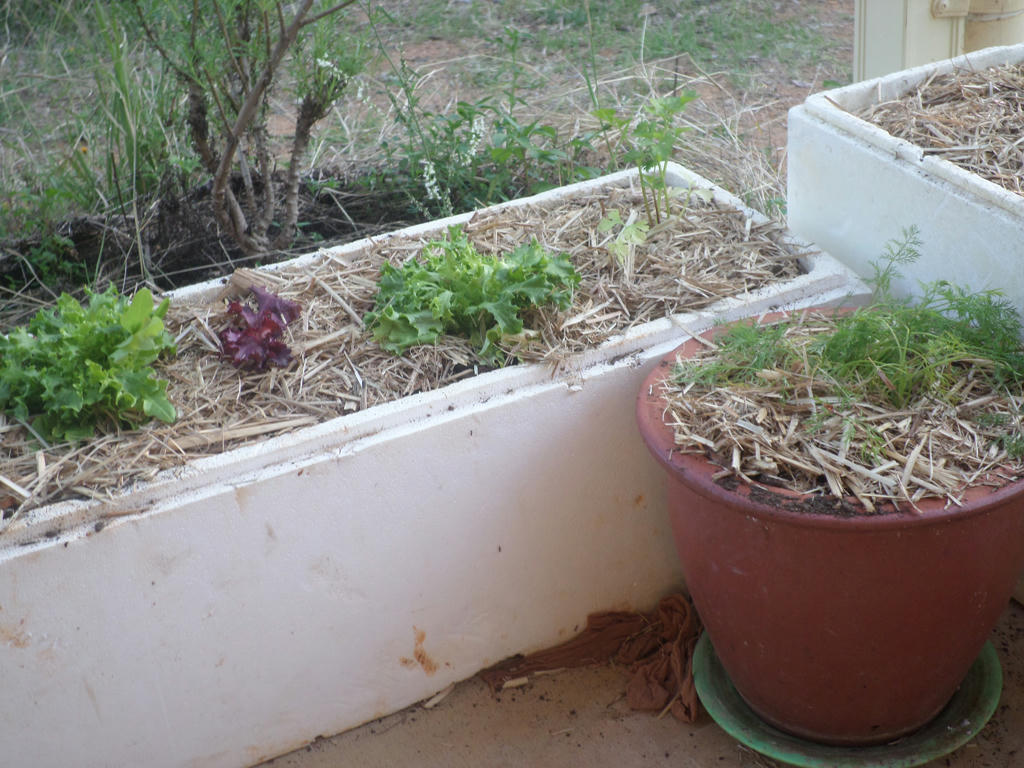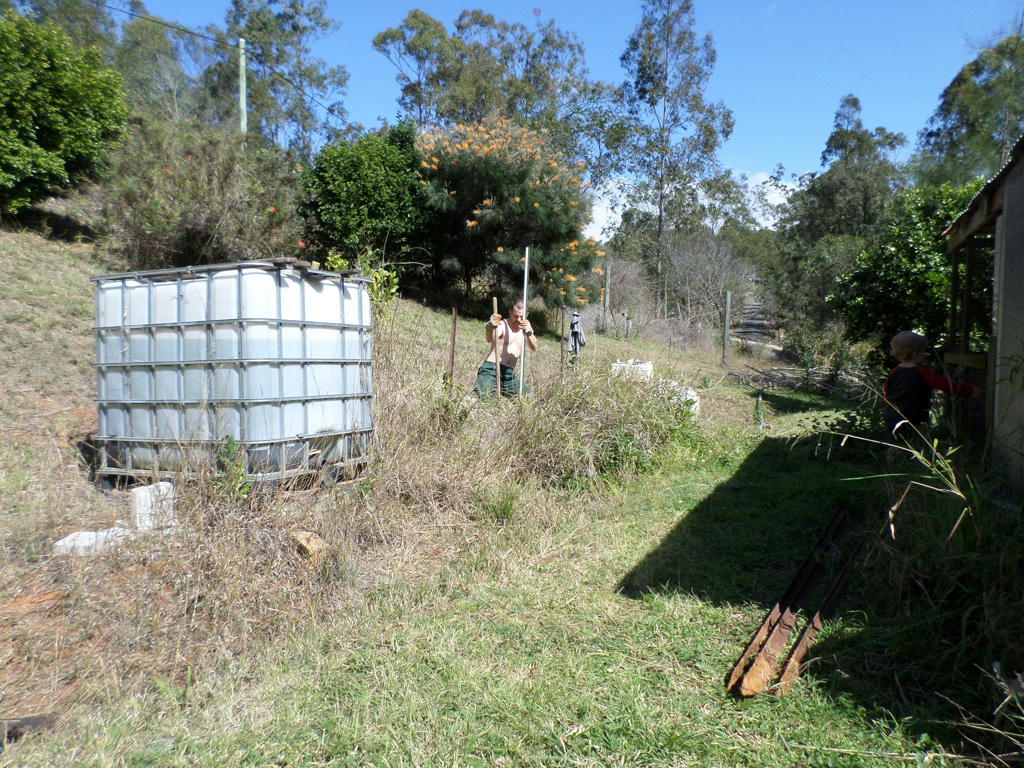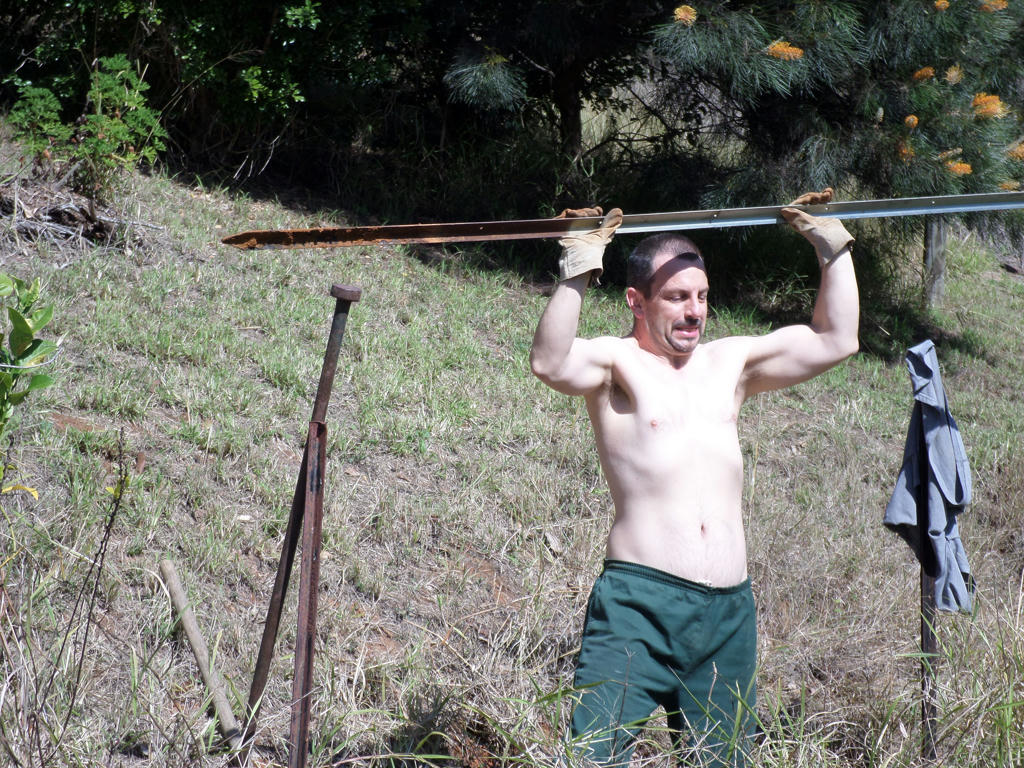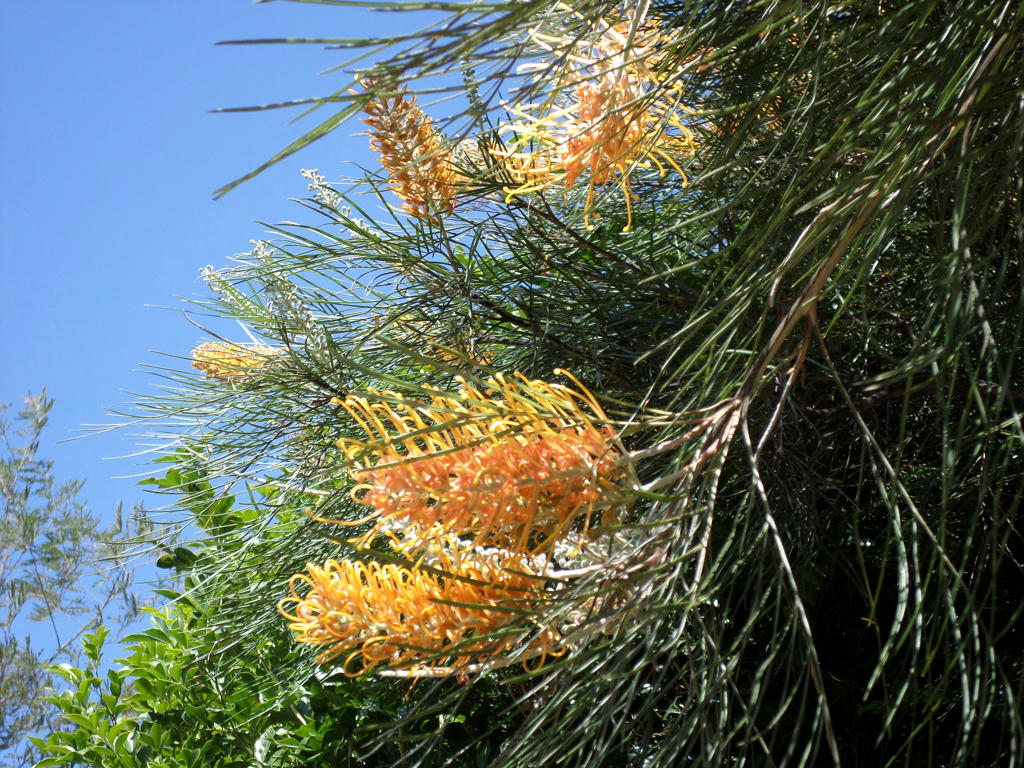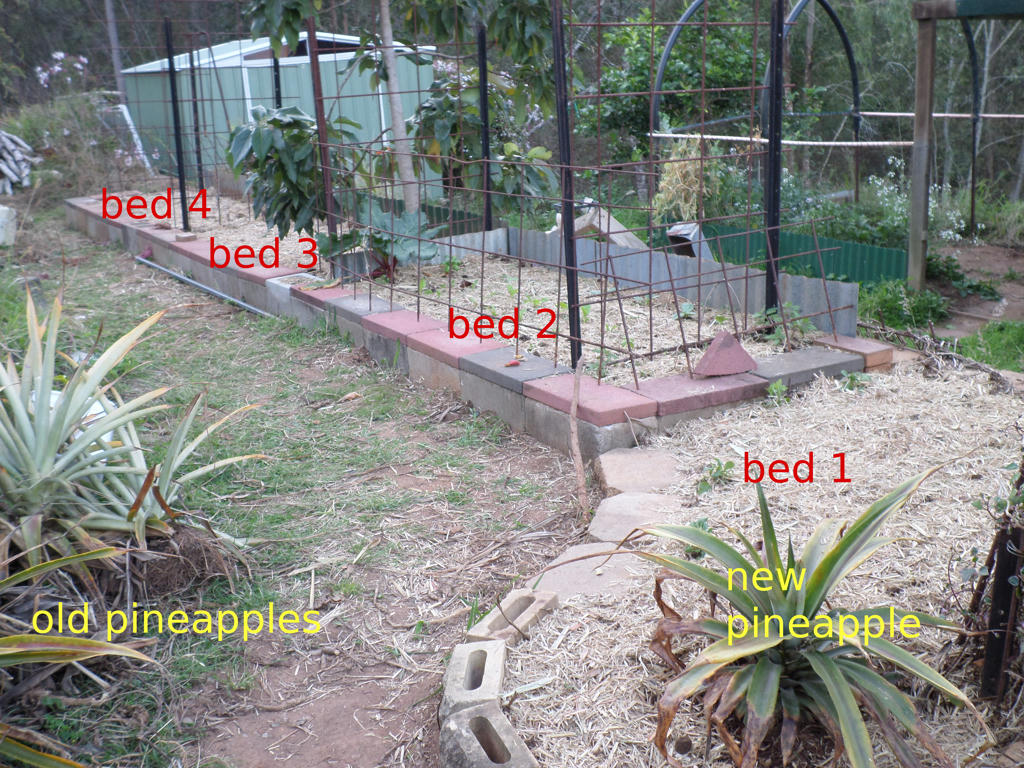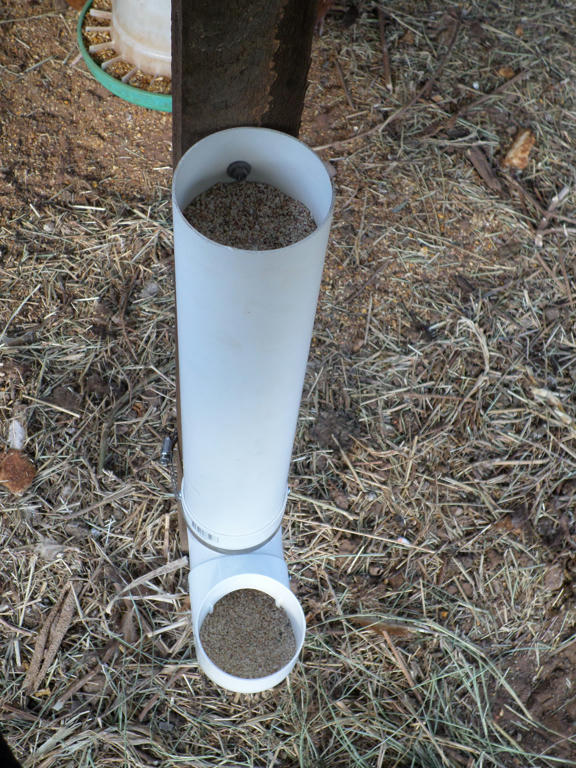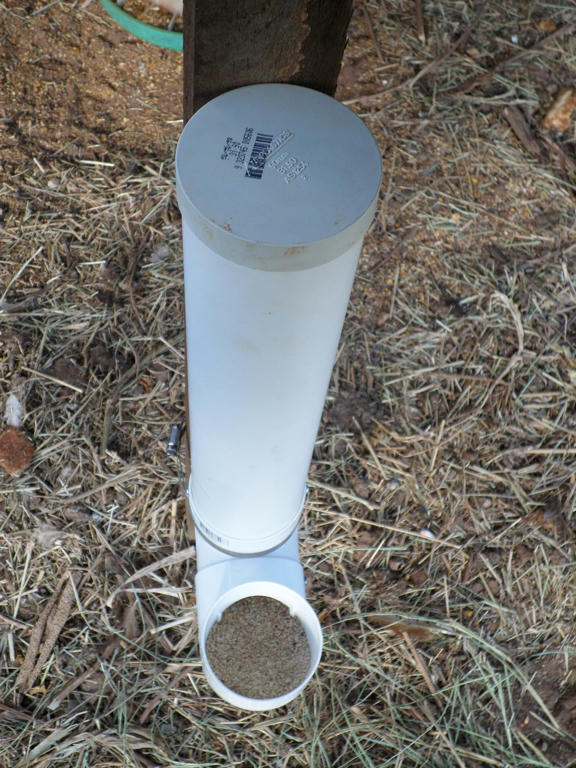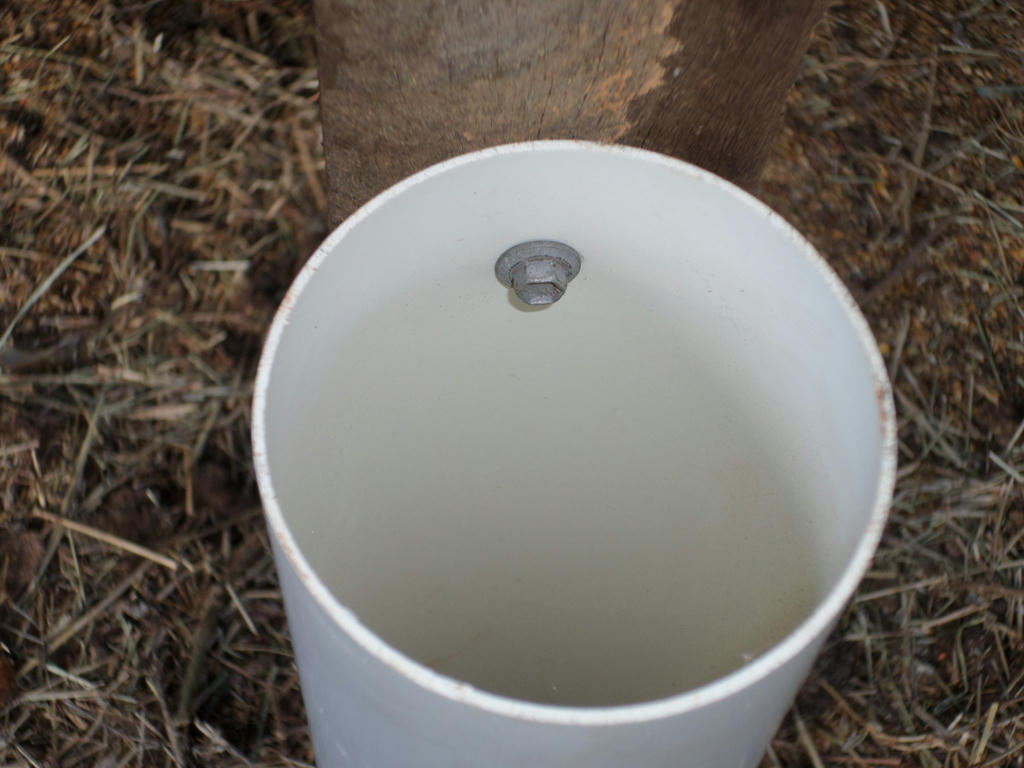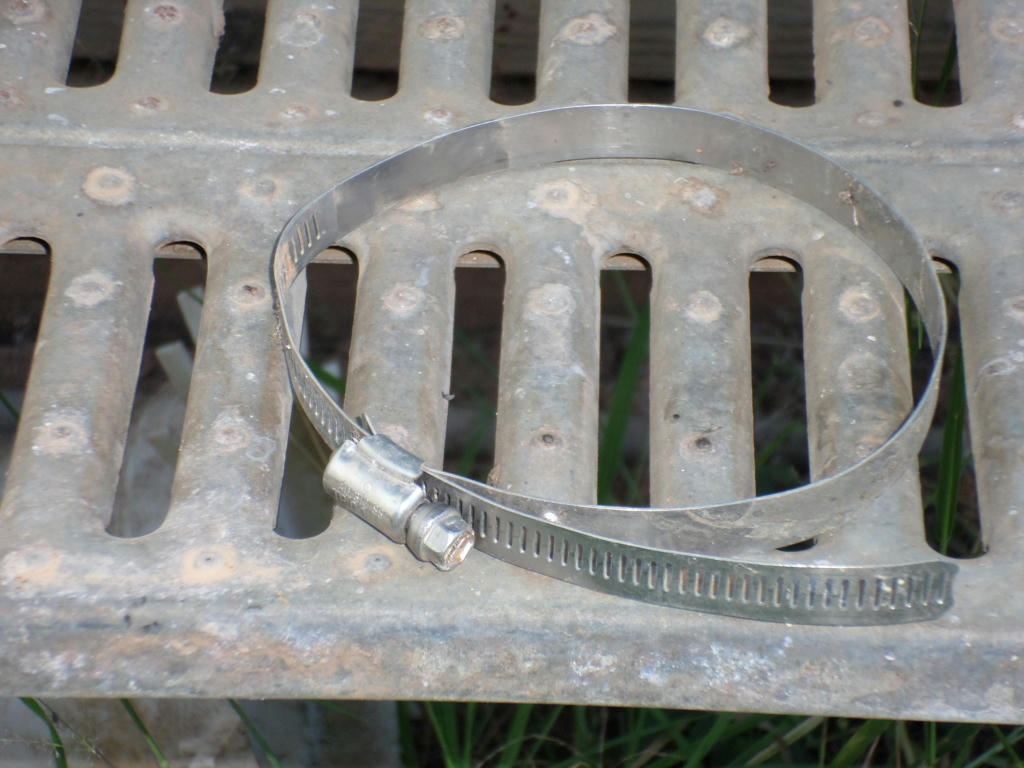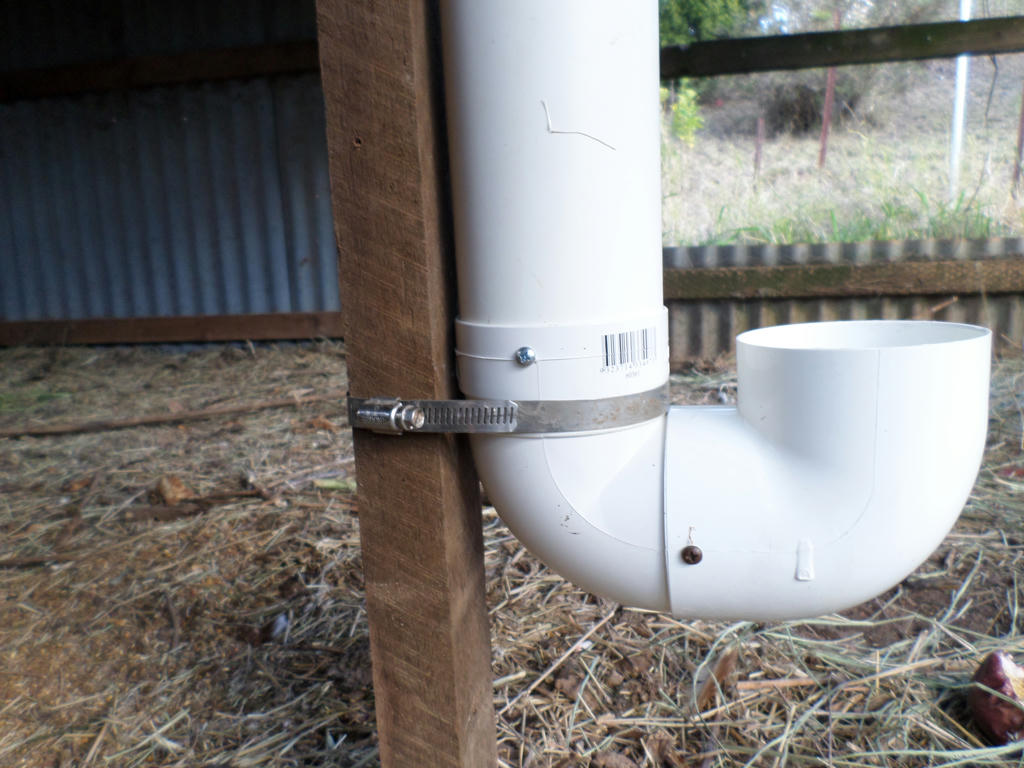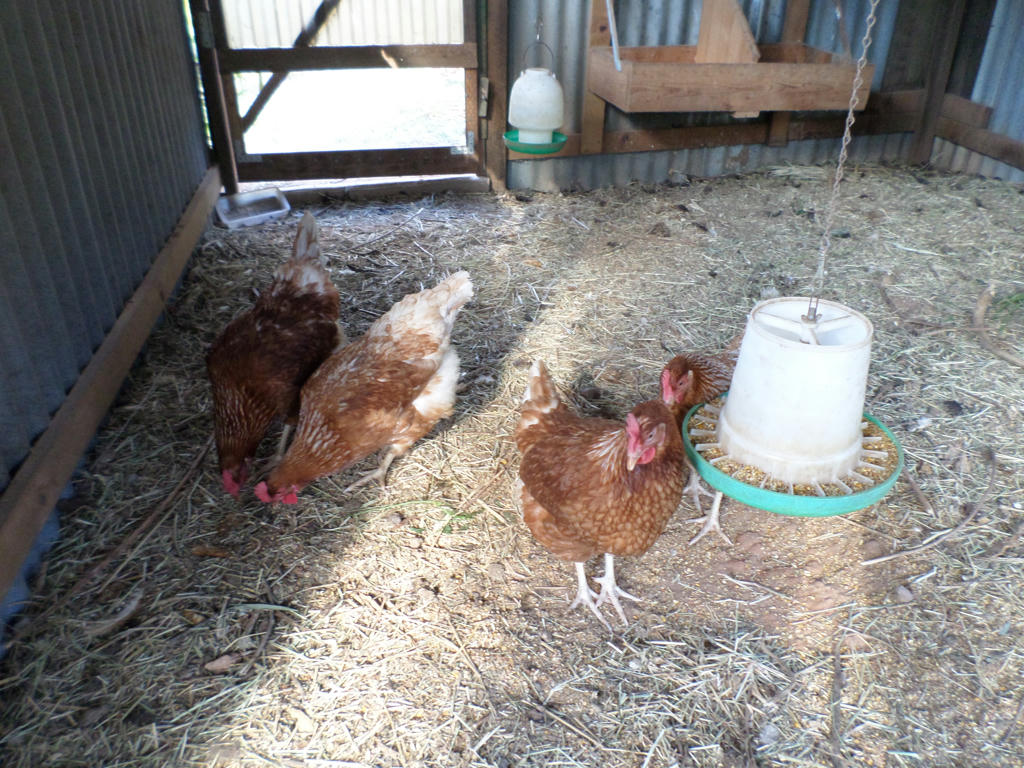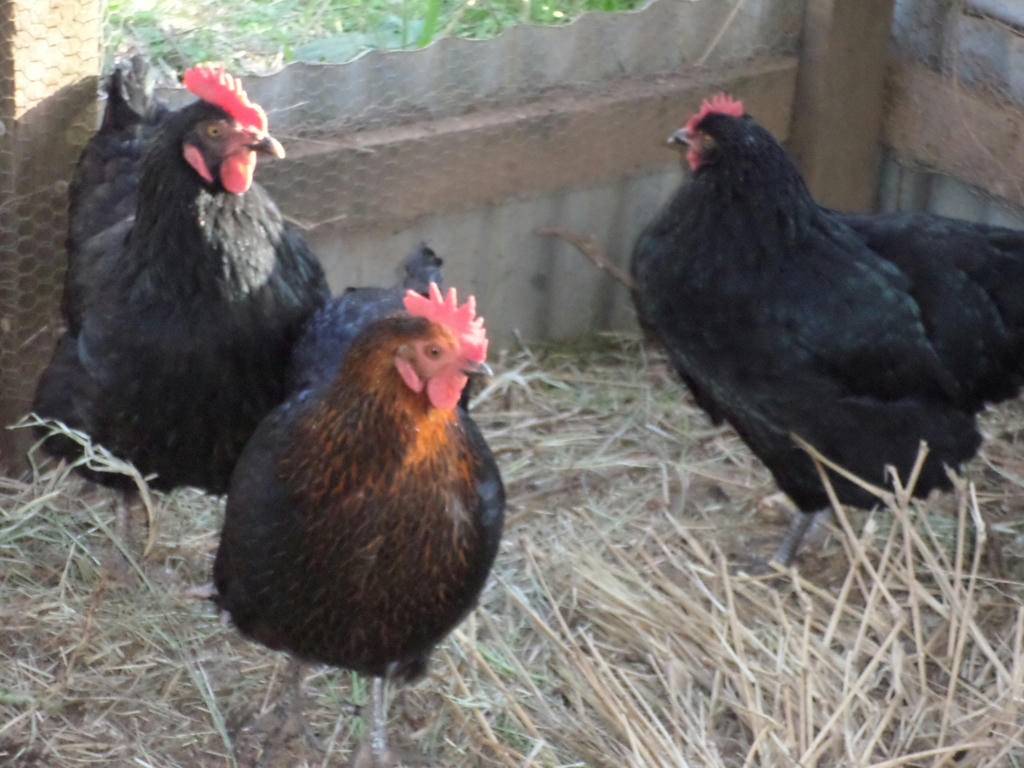Hilltop 2015
The renovations of Hilltop chicken coop, required we rip the old vine out. But before putting in the new vine, I had to deal with the immediate space around the chicken coop. We tried putting down small bricks previously, as garden edging, but being so low and we hardly ever got up there with the mower, it was easy for the grass to take over.
So it was time to employ a different design, with the resources available.
Getting started
First task, was to clean the area around the run section. I removed the huge tufts of grass with the mattock, and moved the scrap, roofing-iron out, which I stored against the coop. It offered some wind and sun protection for the chickens, but it was never meant to be permanent.
The roofing iron was a skip bin find, thanks to David. It was the sections left over from cutting the angles, to fit the gables of a roof. They were all odd shapes, perhaps of no use to a professional builder - too time consuming - but I had an angle grinder, and an idea!
Boxed and raised growing area
Of course, it was a simple idea - but in practice, I had to find adequate pockets of time, someone else could mind the toddler. Because I wasn't going to switch on the angle grinder, without being able to hear what little gardeners in the making, were up to.
With Dad and big Sis, helping on alternate days, I was able to measure up and cut all the roofing iron, to build the raised planting box. I hammered hardwood stakes into the ground, to keep the tin in position. Missing, at the time I took the above image, were three other stakes, placed for wall support.
Not quite finished
I got a little excited when I finally finished the box! David said it looked like something you'd buy in a kit from the garden centre. But I had the satisfaction of knowing, we were using recycled materials at no cost (other than the hardwood stakes). Worth all the effort.
Then, of course, there was the issue of the trellis, for the choko to climb.
A couple of seasons ago
I reused the original concrete rebar (formerly over the run) which now has roofing iron, in its place. The rebar, was left over from our house build, and would be perfect as a vertical growing trellis. I just had to cut it to fit the box.
This western side, really needs the shade during summer.
Trellis support for vine
Thanks to David's efforts, pulling star pickets out of the ground, recently, I didn't have to purchase supports for the trellis either. I attached the rebar to the star pickets, using simple plastic cable ties. These were left from building the run on Middle Ridge, all those years ago. And they haven't decayed in the sun, in that time either - roughly seven years ago.
Newly constructed 2009 - Hilltop chicken coop
Hilltop chicken coop, is about one year younger than its now retired, sister coop, Middle Ridge. The picture above, was taken of the new run - see the pavers of the original growing area? The rebar on top of the roof, is now the trellis on the raised bed.
Visit this link, if you want to take a nostalgic look at the original Hilltop.
Hilltop 2015
Welcome back to the present day again! I'm sure this won't be adequate space for the choko vine, as it will ramble everywhere. But that's part of the jungle environment I'm going for. Even though my chickens have to live in a permanent box, for their own safety, I can still provide nature right at the edges for them.
I know, living in a rectangular box myself, having nature right on the very edges, has a calming (and cooling) effect too.
Curious chickens
In order to plant though, I first had to source soil. I made up barrows, of mixed coffee grounds from David's workplace (6 x 10 litre tubs worth) with dirt from the old, since retired, Middle Ridge, chicken coop.
It took 6 barrows, to fill the beds.
Planting material
All that needed to be done now, was to plant out the space - and what kind of obsessed gardener in Spring would I be, if I didn't have excess plants to go?
The only things I purchased in the barrow, was the choko fruit and leftover celeriac, from what I planted in the main vegetable beds. Oh, and the sugarcane mulch.
The kale, and large tomato plant, I removed from the growing area in Middle Ridge. I needed the soil anyway, so they had to come out.
Perplexed residents
And weren't the girls excited to see me plant the kale so close! All four of the new hens charged at the chicken wire, and wondered why I wasn't hand feeding them, as per usual. Some beaks were left out of joint, and I may be voted out of the hen house, if they don't forgive me soon.
Using the space
This is what its all about though - a better design. Easy pickings for my hens, and for me, the keeper of chickens. I don't have to walk down the hill to pick their kale any more, because its right at their doorstep!
No doubt, it will get caught in the tangle of choko vine, as it grows, but I'm sure the kale will be thankful for the shade during summer.
Transplants from Middle Ridge
What I love about volunteer tomatoes - is there are always so many to choose from when you want them. I'm growing this one up the side of the trellis - thank you pantyhose! It will also be smothered by the choko vine (along with even more kale I planted) but they will all be better for it.
Jungles, lose less moisture to evaporation, and create a greater cooling effect in the surrounding environment. Just what my hens need, living in a partially enclosed metal house.
South facing bed
At the back of the coop, I planted the leftover celeriac, and hopefully some sunflower seeds - if the opportunistic bush rats, don't dig them up like everywhere else.
Right at the end, which is closest to the roosting post (inside the coop) is a herb called Lemon Scented Geranium, or Pellargonium Citronellum.
Scented Geranium
It will hopefully, deter some pests, as its reputed to do. I will plant some wormwood, to deter pests also, when I can strike another cutting. I kept these two herbs near Middle Ridge coop, when it was operational. Tradition required I keep it going at Hilltop, now I have the growing space.
You might think I'm a little crazy, to go to the extremes I have with this particular chicken coop. And this latest raised garden bed caper, would be no exception.
How a choko germinates
To prove how crazy, I actually am - this is why I did it. The humble choko. I blame my mother, because in my youth she kept a choko vine in the backyard. Then tempted me with delicious homemade choko chutney, on my sandwiches. Once you get a taste of that, you go a little balmy - to the point you will turn the world on its axis, for a choko vine of your very own.
The ceremonial planting of the choko fruit, with the captive audience watching close by, just made the madness, all the more dignified. It's the details which matter.
Ready to grow!
So be sure to have your choko sprout (mine was about 3cms long) before planting, and cover in the earth, with the shoot poking out. You want the dirt in contact to where the roots will form, but you also want the shoot poking out of the ground.
Then you too can tempt your family and friends, with a lifelong obsession with choko vine growing. Chicken coops are optional, as my mother's vine grew over the side of some ugly wire fencing. Although, it was technically shading the quail's run, mum had also built for me - where I grew generations of pint-sized poultry.
Hmmm, there's a pattern here.
Look carefully
Meanwhile, did I tell you about the avocado, banana, orange and passionfruit?
I probably have, on different occasions, but as I was retreating to the shade of the orange tree recently, to take the last photos of the coop - I suddenly saw them all together.
The orange tree (left) and passionfruit vine (growing on the fence post - amongst the grass) are all on the same level as Hilltop chicken coop. The banana (middle) and avocado (right) are on the lower section, where the vegetable beds are.
There are the bare branches of an apple tree in the middle also, but I suspect the golden delicious died, and its the rootstock which has regrown. It is still welcome as a shade tree.
Wee orange in the background - 2009
Now a tree, taller than me
As I listened to the bees smothering the orange tree, and getting drunk on orange blossoms, myself - I suddenly saw what I've been doing with my life, for the past eight years. I know I tell you this all the time, but here it was - a garden. I've been building a garden.
As the trees get bigger, they will join together to build a canopy. And I will finally have that Grove, I've been dreaming about. The very namesake of my blog. So a jungle laden choko vine, is hardly out of place.
May this journey be a reminder, to all those who toil, believing what they're building is not quite up to the job. It can always be revisited, modified, designed better, added too and just plain crammed with plants. Everything is made better with plants. Those tiny steps though, are just the beginning.

